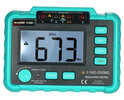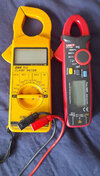In a perfect installtion the NE current from an NE would flow back proportionally to N and to E in a TNC-S system or indeed any TNS system containing a NE path for such a circulating current that makes it act proprtionally TNC-S like in principle.
In practice this is less likely to cause sufficient current missmatch of N to cause RCD trips or greatly slanted tripping characteristics.
So it is usually L & N imbalance caused by any circuit on the same RCD and therefore any L to fault or N to E fault on a RCD circuit drawing current to achieve the imbalance for a trip (say 30mA notationally, being anything over 15mA up to 30mA usually and often set as tripping between 21mA to 24mA or from 24mA to 27mA according to the ramp tests on my meter - on 30mA setting it starts at 15mA and ramps up 3mA per step until it trips) so if we reckon most RCDs might be considere 21mA to 27mA sensitive in practice on a bog standard 30mA non delayed RCD.
Well I think, unless anyone else has some thoughts.
In practice this is less likely to cause sufficient current missmatch of N to cause RCD trips or greatly slanted tripping characteristics.
So it is usually L & N imbalance caused by any circuit on the same RCD and therefore any L to fault or N to E fault on a RCD circuit drawing current to achieve the imbalance for a trip (say 30mA notationally, being anything over 15mA up to 30mA usually and often set as tripping between 21mA to 24mA or from 24mA to 27mA according to the ramp tests on my meter - on 30mA setting it starts at 15mA and ramps up 3mA per step until it trips) so if we reckon most RCDs might be considere 21mA to 27mA sensitive in practice on a bog standard 30mA non delayed RCD.
Well I think, unless anyone else has some thoughts.



